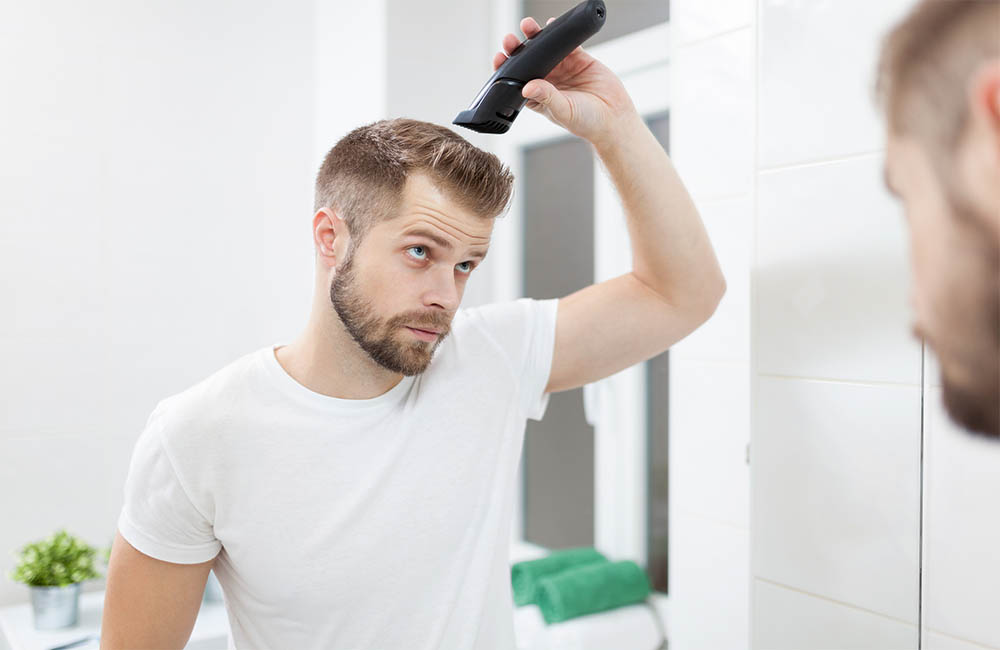
Everything you need to know before cutting your hair at home
Everything you need to know before cutting your hair at home. In this current reality, going to a hairdressers for a cut isn’t possible.
With many businesses closed due to Covid-19, what are you supposed to do when overgrown bangs, split ends and uneven layers take over your life?
Learning how to cut your hair at home seems like a viable option. But this can easily go wrong if you don’t know what you’re doing. To keep you from butchering your beautiful hair, here’s everything you need to know before picking up your scissors.
Do You Really Need A Haircut?
There’s a reason why you pay a professional to cut your hair. Not only do they have the skillset needed to ensure a quality cut, but they are also equipped with certain tools and products you might not have at home.
Before you go about cutting your hair yourself, ask yourself if you really need to? Or are you just bored?
Split ends are usually a sign that you need to get your hair cut. And they typically show up three or four months after your last cut. If you’ve seen a professional within that time and your hair isn’t feeling brittle, you can probably wait it out.
Use Reparative Measures
If you can put off cutting your hair until you can once again go to a hairdressers, the right products can help keep your hair healthy and strong.
Take this time to focus on the health of your hair. In addition to treating your hair to masks and oils, heat styling and colouring your hair less can significantly lengthen the time between haircuts.
If a cut isn’t a necessity to you right now, it wouldn’t be the worse idea to simply embrace the grown-out period.
Have The Right Tools
Put down the kitchen scissors! They are not sharp enough and can push the hair when cutting, resulting in crooked lines. Buy a pair of hair-cutting shears as the sharp, precise blades will allow you to be more exact, making it easier to get clean lines.
Start With Clean, Dry Hair
Unless you have natural curls or coil, chances are your stylist normally wets your hair before cutting. While it may seem like a good idea to copy what your stylist normally does, this may not exactly be the case. Wet hair allows your stylist to get clean lines but they are trained to do that.
You, however, are not. The best way to ensure your DIY haircut comes out the way you want it to is to start with clean, dry hair. Basically, how it looks on any other day. This will help you avoid any surprises, like how much your hair will shrink up when it dries.
Cleaning your hair before cutting it is important. If your hair is oily or dirty, it will cling together and create an uneven finish.
Start Small
Obviously, now is not the time to experiment with a new style. The more drastic your hair cut, the more you run the risk of a major mishap.
Don’t cut to the length you want to at first. Start small and work your way up to it. Remember, you can always trim more hair off, but can put it back on again if you cut off too much.
Work in small sections and start at the front. You can see where your hair will lay and this will give you a guide for the rest of your hair. Make sure to have plenty of hair clips to secure any stray sections.
Pay Attention
This is the part where you actually cut your hair and the way you hold your hair and scissors will have an impact. Pull your hair straight upwards with your fingers as this is the easiest way to make sure hair length is even. Then, place your scissors parallel to the hair peeking through your fingers and snip vertically rather than straight across.
Point your scissors upwards and lightly open and close on the ends of the hair. This will give a more diffused look. It’s also an insurance policy against uneven ends, which stand out more when hair is cut straight across.
You’ve likely seen your stylist do this numerous times but if you’re having trouble, YouTube it.
Be Careful With Bangs
Let’s be real. We know that life can get a bit boring in quarantine but now is not the time to decide you want bangs. But just because you shouldn’t give yourself new ones, it doesn’t mean you can’t maintain existing bangs.
There are plenty of guides out there that advise on how to cut your own bangs. But whatever you do, be patient and keep your cuts minimal. Otherwise you might end up with bangs way shorter than you anticipated.
